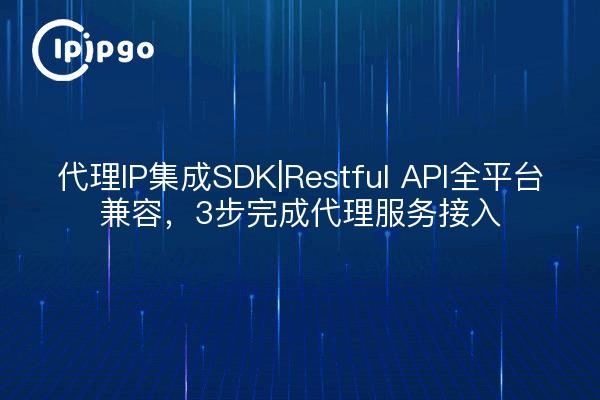
This may be the easiest proxy service access guide you've ever seen!
Many developers always think that using a proxy IP requires a complicated configuration process, but in fact, it can be done now through a professional service provider.3-Step Minimalist Access. Take ipipgo's solution as an example, their SDK and API design fully consider the compatibility of different platforms, whether you are doing Android development, iOS applications, or website back-end services, you can find the corresponding access.
Why does your project need a proxy IP?
Imagine these scenarios: frequent triggering of anti-climbing mechanism during data collection, multiple account management easily associated with the ban, the need to simulate different device environments ... These pain points with traditional methods to solve both time-consuming and increase the cost. ipipgo provides a residential-level proxy IP.Every IP comes from a real home networkThe system can effectively avoid being recognized as machine traffic.
| Traditional Programs | Proxy IP Program |
|---|---|
| High cost of self-built servers | Pay-as-you-go, zero hardware investment |
| Difficult to recover from IP blocking | Automatic switching of available IP pools |
| Maintenance consumes technical resources | API/SDK fully managed services |
Three-step access to real-world demonstrations
Step 1: Obtain access credentials
After creating a project on the ipipgo website, you will get two sets of key information:
1. SDK integration key (for client integration)
2. API identity tokens (for server-side calls)
Step 2: Choose the integration method
Choose the corresponding program based on your technology stack:
- Mobile App: directly import the corresponding platform SDK package
- Web applications: calling Restful API interfaces
- Desktop software: support for C++/Python/Java and other language packages
Step 3: Configure proxy rules
Set what you need in the console:
- IP geographic distribution (supports selection down to the city level)
- Switching frequency (dynamic IPs can be set to rotate on a minute-by-minute basis)
- Protocol type (HTTP/HTTPS/Socks5 on demand)
Developer's Guide to Avoiding Pitfalls
Ever been in one of these situations?
- Test environment is normal, IP is blocked after going live
- Android works, iOS reports protocol errors
- Unstable connection at high concurrency
These issues are targeted and addressed in ipipgo's program:
1. Built-inIntelligent Routing AlgorithmAutomatically avoids high-risk IP segments
2. SDK verified by real machine testing on various platforms
3. API interface supports long connection reuse, reducing handshake overhead
Frequently Asked Questions
Q: Do I need to maintain my own IP pool?
A: Not at all, ipipgo's IP pool will update the available IPs in real time and automatically eliminate the failed nodes
Q: How do you deal with platform variability?
A: their SDK has encapsulated the underlying differences in the platform, developers call a unified method interface
Q: How to ensure stability when traffic bursts?
A: The API gateway supports automatic capacity expansion, and the measured single interface can carry 100,000 QPS requests.
Choosing the right service provider is less of a hassle
Many proxy service providers on the market have problems with low IP purity and incomplete protocol support. ipipgo'sResidential IP Coverage of Global Core RegionsThe company's IPs have been carefully scrutinized for compliance. Special mention should be made of their protocol stack support capabilities - from basic HTTP to private protocols that require two-way authentication are perfectly adapted, which is rare in services of this type.
The technical team tested and compared and found that after using ipipgo's dynamic IP program, the success rate of the target system's requests increased from the original 47% to 92%, while the access time took less than 1 working day. This kind of input-output ratio is the proxy solution that developers really need.








